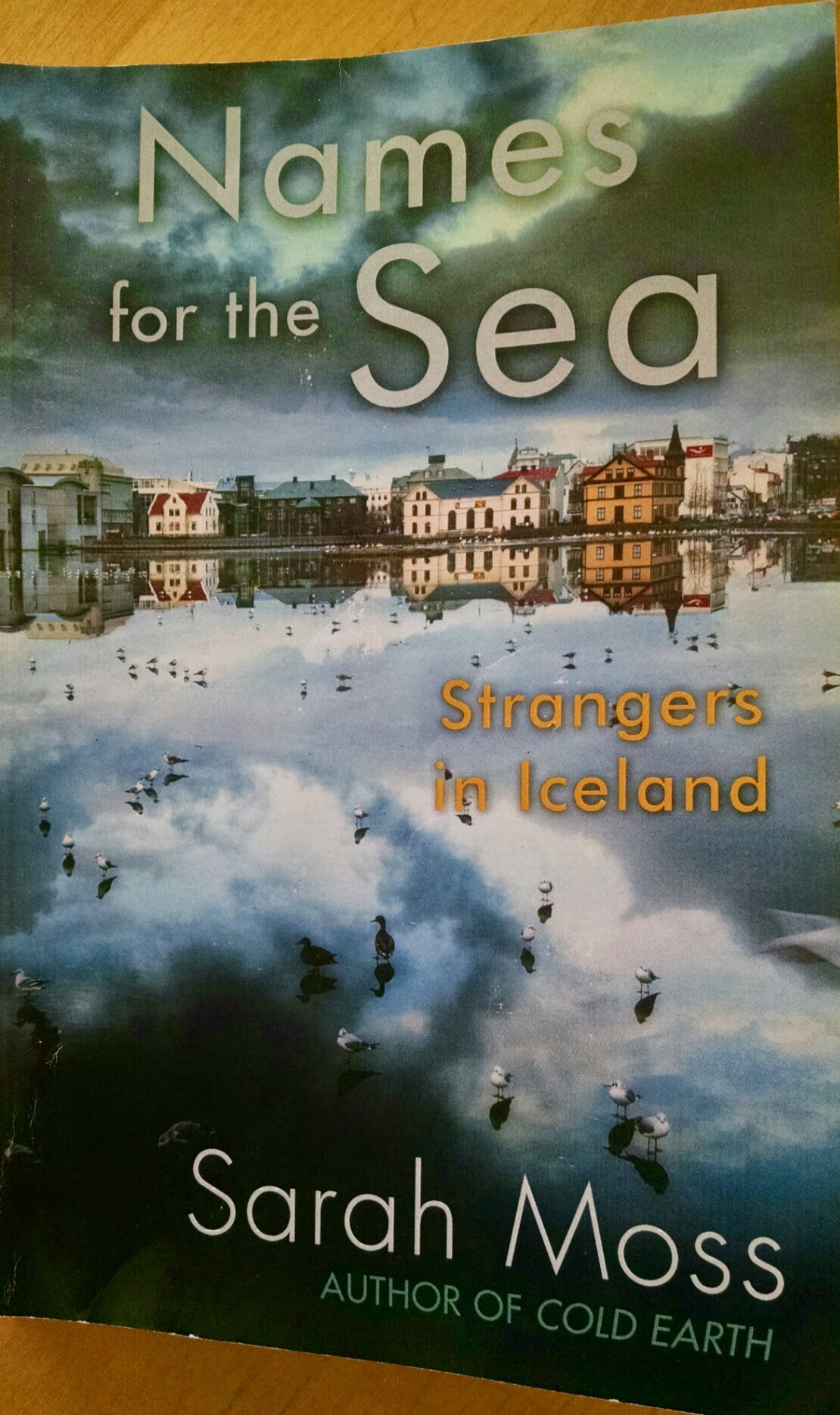
I took a picture of my copy. I like the American cover best, partly because I know where to stand to get this shot of Tjornin.
People read travel stories about places they have never been in order to vicariously experience a trip they could never take themselves. Or they read as a form of research for trips to places they might someday go. I’m not sure if it is as common to read travel books about places you have already been, but I like to do it. It’s a weird combination of vicarious adventure, excitement over shared experience, and the alternate schadenfreude over the author’s mistakes and embarrassment at the reader’s own.
The Premise
When I found Names for the Sea by Sarah Moss in a Lopez Island bookstore, I couldn’t resist. It’s the story of how Moss uprooted her family of four to spend a year teaching at the University of Iceland. That’s a dream of mine despite the fact that I’m completely unqualified for a university position. Because I also have two children and have visited Reykjavik a few times, I recognize many of her experiences both in dealing with kids far from home, and exploring the city (and Borgarnes). And because I’m completely obsessed with Iceland and have the requisite reverence for the sagas, I had the pleasure of a few expressions of “Well, duh,” while reading. (Naturally I glossed over the multitude of situations Moss handled with a grace to which I could never pretend).
Recognition
Moss is a professor of literature and a novelist, and occasionally she slips into language closer to poetry than nonfiction prose. Scenes involving her meetings with the elderly Vilborg are particularly prone to such lyricism. Several times in the course of reading the book I had to resist out-loud exclamations of, “Yes, exactly!” as she perfectly described some endearing or infuriating experience I recognized as typical of Iceland. My husband was forced to listen to me read many passages out loud – Moss’ description of forcing her car door open against the wind on the spit that houses Borgarnes’ Settlement Center could have been my own, as could her mental dialogue each time she approached a cash register.
Difference
Even more interesting than similar experiences were the differences. Moss was actually living in Iceland with her children on a local salary. She appears never to have braved Laugavegur during the rúntur, wasn’t comfortable with the swimming pool culture, failed to honor the sagas, and found the traffic terrifying. (There seems to be a consensus about this, and fatal crash statistics support the opinion, but so far I have found driving in Reykjavik easier than driving in Seattle, even though I don’t know where I’m going).
On the other hand, she also made deep friendships rather than passing ones, learned the fundamentals of the language, watched every film ever made in Iceland, and made headway into understanding the tangled fishing net that is Icelandic politics. Even more importantly, Moss is English and I am American. Like its geography, Icelandic culture combines elements of Europe and North America. Moss commented upon the aspects of that culture that I am most likely to take for granted.
Insights
Some of her commentary provides significant insight. She shows how Iceland’s small size exacerbates it homogeneity. More than simply dealing with the complications of immigration and resulting racial integration (or segregation) Icelanders have to get used to the idea of strangers of any kind. In such a small country, it is unusual to ever meet someone you have no particular connection to. This explains many Icelandic eccentricities, like the absence of second-hand stores and the stigma associated with charity. It’s not shameful to need help; it’s shameful to need help from strangers.
She also explores the strangely Icelandic dichotomy between independence and group-think. How did a few greedy bankers so thoroughly con a country of sjálfstætt fólk? Moss was in a unique position to explore these issues because she arrived in Iceland during the darkest days of the crash, when memories of the pots and pans revolution were fresh and detailed, and produce was missing from the supermarkets.
Eyjafjallajökull
Moss was still in Iceland during the eruption of Eyjafjallajökull. In fact, it determined the location of her next job by limiting which interviews she was able to reach. Moss links the calm local response to volcanic events to centuries’ of a fishing economy and life subject to the whims of a hostile climate.
Moss’ literary approach combined with the serendipity of having experienced life in Iceland during two of he small nation’s most defining moments elevate Names for the Sea. Instead of a straightforward travel memoir, it’s a more thoughtful study of Icelandic culture. I would say that it is worthwhile reading even for those who are not already interested in Iceland. But if you are reading this blog, you probably are already interested in Iceland.



About the author